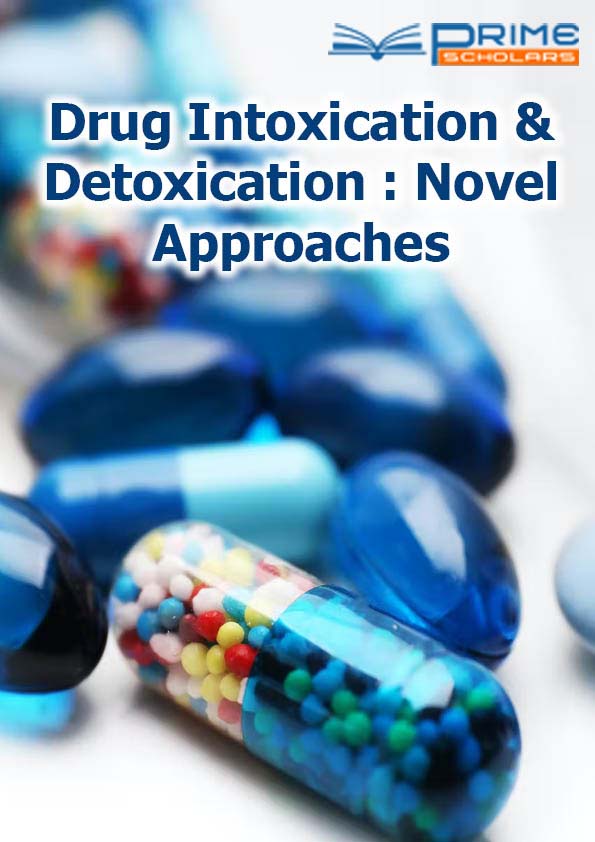Opinion - (2022) Volume 3, Issue 3
Effect of Neonicotinoids in Vertebrate and Non-Vertebrate Species
Lucija Seric Jelaska*
Department of Biotechnology, Zagreb University, Croatia
*Correspondence:
Lucija Seric Jelaska,
Department of Biotechnology, Zagreb University,
Croatia,
Email:
Received: 01-Aug-2022, Manuscript No. DIDNA-22-14866;
Editor assigned: 03-Aug-2022, Pre QC No. DIDNA-22-14866 (PQ);
Reviewed: 17-Aug-2022, QC No. DIDNA-22-14866;
Revised: 22-Aug-2022, Manuscript No. DIDNA-22-14866 (R);
Published:
29-Aug-2022, DOI: 10.36648/DIDNA 3.3.14
INTRODUCTION
Neonicotinoids are the most generally involved insect poisons
on the planet Sparkles. Their utilization influences non-target
invertebrate and vertebrate types of agroecosystem networks.
Besides, they have been found to spread to surface waters and
adversely influence the macroinvertebrate networks. Neonicotinoids
are nicotinic acetylcholine receptor agonists that tight
spot to Nicotinic Acetylcholine Receptors (NAChRs) in the focal
sensory system of bugs. Lower convergences of neonicotinoids
cause anxious excitement, while higher fixations bring about
loss of motion and passing goulson. Unusual clean Food Utilization
Rate and hypoactivity have been noted in other savage
carabids in the wake of being treated with thiamethoxam.
Description
Sublethal impacts of pesticides on bugs can be communicated
in digestion and at a cell level as oxidative pressure oxidative
pressure is characterized as unevenness between the organic
entity’s development of Responsive Oxygen Species (ROS) and
their disposal, which can bring about harm of biomolecules
that are vital for creatures’ typical capability. It is laid out that
the viability of certain insect poisons depends on the oxidative
lopsidedness that they cause in bugs Superoxide Dismutase
(Turf) is one of the chemicals in bugs that fills in as a cell reinforcement
protection by changing harming superoxide anions
into two less harming species: Oygen (O2) and Hydrogen peroxide
(H2O2). Carabid scarabs are among the main gatherings
of useful arthropods in the agroecosystem pecking order, going
about as specialists in regular irritation and weed control
Lundgren, by benefiting from slugs moths senaga and hamahura,
aphids bryan and wratten dipteran hatchling kromp, and
weed seed saska. They are species-rich, simple to distinguish,
and delicate to anthropogenic changes, which gives them bioindication
esteem. Field and research facility tests demonstrate
the way that openness to pesticides can cause deadly and
sub-deadly impacts in conduct and physiology what’s more, on the populace level of non-target arthropods, including the carabid
insects. They can be presented to neonicotinoids through
contact with deposits by means of body surface shower beads,
and furthermore through benefiting from a sullied food source
exhibited that openness to handle dosages of either imidacloprid,
thiamethoxam, or clothianidin by means of corn seedlings
brings about almost 100% mortality north of four days.
Each life form has a restricted energy financial plan Hoffman
and Parsons that is conveyed on biomass creation, proliferation,
and breath. Extra detoxification that carabids need to direct
subsequent to being presented to poisons, for example,
neonicotinoids is vigorously expensive. noted hypoactivity and
decrease in food utilization and modification in the way of behaving
of carabid Platynus assimilis. A few prior investigations
portrayed how these sub-lethal impacts can adversely affect
the effectiveness of hunters in bug and weed control. Notwithstanding,
the thorough exploration on social and metabolic effects
of present moment neonicotinoid inebriation in carabid
creepy crawlies is as yet deficient.
Conclusion
Two hours after treatment each insect was offered two new
blowfly hatchlings Calliphoridae and left to benefit from them
for 12 hours. The hatchlings were indented to work with the
taking care of. Food was gauged prior to being proposed to the
scarabs, and just after it was taken out from the holder twelve
hours after the fact. Wet channel paper guaranteed 100% stickiness
in the holder so no weight was lost by means of dissipation.
The locomotor capacity of each insect was tried by turning
it on its back and noticing the response for 10 seconds.
Acknowledgement
None.
Conflict of Interest
The author’s declared that they have no conflict of interest.
Citation: Jelaska LS (2022) Effect of Neonicotinoids in Vertebrate and Non-Vertebrate Species. Drug Intox Detox: Novel Approaches.
3:14.
Copyright: © 2022 Jelaska LS. This is an open-access article distributed under the terms of the Creative Commons Attribution
License, which permits unrestricted use, distribution, and reproduction in any medium, provided the original author and source
are credited.
